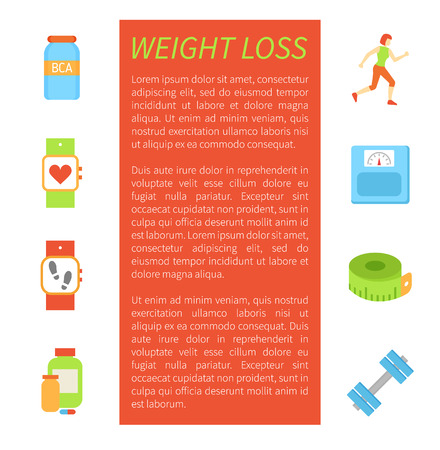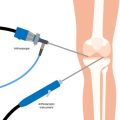Understanding Macronutrients: The Basics
When it comes to eating for a healthy heart, understanding the basics of macronutrients is key. In the typical American diet, protein, carbohydrates, and fats are the three main macronutrients that provide energy and support overall health. Each one plays a unique role, especially in keeping your heart strong and healthy.
What Are Macronutrients?
Macronutrients are nutrients your body needs in large amounts for energy, growth, and bodily functions. They include:
- Protein: Builds and repairs tissues, including your heart muscle.
- Carbohydrates: Your body’s main source of energy, fueling everything from your brain to your workouts.
- Fats: Supports cell structure, hormone production, and helps absorb vitamins—plus some types of fat can actually protect your heart.
How Macronutrients Support Heart Health
Balancing these macronutrients is important because each affects your heart in different ways. Too much or too little of any can lead to problems like high cholesterol, high blood pressure, or other risk factors for heart disease common in the U.S.
The Role of Each Macronutrient in Heart Health
| Macronutrient | Main Role | Heart Health Benefits | Common American Sources |
|---|---|---|---|
| Protein | Builds & repairs tissues | Supports heart muscle & overall strength | Chicken, fish, beans, eggs, lean beef |
| Carbohydrates | Main energy source | Powers heart function & daily activity; fiber supports cholesterol control | Bread, rice, potatoes, fruits, veggies |
| Fats | Cushions organs & absorbs vitamins | Healthy fats (like those from nuts or olive oil) can lower “bad” cholesterol and protect against heart disease | Avocados, nuts, seeds, olive oil, fatty fish |
A Quick Look at Daily Balance
The right balance depends on your age, activity level, and health goals. However, many health experts in America recommend getting:
- 10–35% of daily calories from protein
- 45–65% from carbohydrates (focus on whole grains and fiber)
- 20–35% from healthy fats (limit saturated and trans fats)
This approach helps support a healthy heart while fitting into American lifestyles and food preferences.
2. Balancing Protein Intake for Cardiovascular Health
The Importance of Lean Protein Sources
Getting enough protein is essential for building and repairing tissues, supporting your immune system, and maintaining muscle mass. When it comes to heart health, the type of protein you choose makes a big difference. Lean protein sources are lower in saturated fat, which can help keep cholesterol levels in check and reduce the risk of heart disease. Its best to limit red meats like beef and pork, as these often contain higher amounts of saturated fats. Instead, focus on healthier options that support cardiovascular wellness.
Recommended Daily Amounts
According to the Dietary Guidelines for Americans, most adults should aim for about 5-6 ounces of cooked lean protein per day, depending on age, sex, and activity level. This equals roughly two servings of protein foods daily. Its helpful to vary your protein choices throughout the week to get a range of nutrients.
Popular American Lean Protein Options
| Protein Source | Serving Size | Main Benefits |
|---|---|---|
| Poultry (chicken or turkey breast) | 3 oz cooked | Low in saturated fat; high in B vitamins |
| Fish (salmon, trout, tilapia) | 3 oz cooked | Contains heart-healthy omega-3 fatty acids |
| Legumes (beans, lentils) | ½ cup cooked | High in fiber; plant-based; cholesterol-free |
| Plant-Based Proteins (tofu, tempeh) | 3 oz cooked | No cholesterol; low in saturated fat; rich in minerals |
How to Add More Lean Protein to Your Diet
If youre looking to eat healthier for your heart, try grilling or baking chicken instead of frying it, swap out ground beef for turkey in recipes like chili or tacos, include beans in salads or soups, and experiment with tofu or tempeh in stir-fries. These small changes can make a big impact on your overall heart health while keeping your meals delicious and satisfying.

3. Carbohydrates: Choosing the Right Types
When it comes to heart health, not all carbs are created equal. In the typical American diet, carbohydrates can come from a wide range of foods like bread, pasta, rice, fruits, vegetables, and sugary snacks. The key is choosing the right kinds of carbs to support a healthy heart.
Whole Grains: A Better Choice
Whole grains such as brown rice, whole wheat bread, oatmeal, and quinoa are packed with fiber and nutrients. Unlike refined grains (like white bread or white rice), whole grains have not been stripped of their bran and germ, which means they help keep your blood sugar steady and make you feel full longer.
Benefits of Whole Grains for Heart Health
- Help lower cholesterol levels
- Support healthy digestion
- Provide long-lasting energy
- Reduce the risk of heart disease
Fruits and Vegetables: Nature’s Sweet Treats
Fruits and vegetables are naturally low in fat and high in fiber, vitamins, minerals, and antioxidants. They provide complex carbs that your body digests more slowly than simple sugars. This slow digestion helps prevent spikes in blood sugar and keeps your heart in better shape.
Why Choose Complex Carbs Over Simple Sugars?
| Complex Carbs (Good) | Simple Sugars (Limit) |
|---|---|
| Whole grains, fruits, vegetables, beans | Soda, candy, pastries, white bread |
| Digest slowly & keep you full longer | Cause quick spikes & crashes in energy |
| Steady blood sugar for heart health | Can raise risk of weight gain & heart issues |
| High in fiber & nutrients | Low in fiber & nutrients |
The bottom line? Swap out white bread for whole wheat, choose brown rice over white, snack on fruit instead of candy, and fill half your plate with veggies at meals. These small changes can make a big difference for your heart health.
4. Fats: Navigating Good vs. Bad Choices
Understanding the Types of Fats
When it comes to heart health, not all fats are created equal. The American diet includes different types of fats, and knowing which ones to choose can make a big difference for your heart. Lets break down the main types of dietary fats:
| Type of Fat | Description | Main Food Sources | Impact on Heart Health |
|---|---|---|---|
| Unsaturated Fats | Healthy fats that help lower bad cholesterol (LDL) and support heart health. | Avocados, nuts (almonds, walnuts), seeds, olive oil, fatty fish (salmon, tuna) | Beneficial—help reduce risk of heart disease. |
| Saturated Fats | Mostly found in animal products and some tropical oils; can raise bad cholesterol levels if eaten in excess. | Butter, cheese, red meat, whole milk, coconut oil, palm oil | Limit—can increase risk of heart disease if consumed too much. |
| Trans Fats | Artificially made fats found in processed foods; worst type for heart health. | Margarine, packaged snacks, baked goods, fried fast foods | Avoid—increases risk of heart disease significantly. |
Choosing Heart-Healthy Fats in Everyday Life
It’s easier than you might think to swap out unhealthy fats for better options. Try these simple tips for an American lifestyle:
- Cook with olive oil or avocado oil instead of butter or margarine.
- Add sliced avocado to salads or sandwiches instead of cheese or mayo.
- Snack on a small handful of nuts like almonds or walnuts instead of chips or cookies.
- Select grilled fish or chicken over fried options at restaurants.
- Check food labels for “partially hydrogenated oils” and avoid those products—they contain trans fats.
The Bottom Line on Fats for Your Heart
Balancing your fat intake by focusing on unsaturated fats while limiting saturated and avoiding trans fats is a key step toward supporting your heart. Making small changes every day adds up—your heart will thank you!
5. Practical Tips for Americans to Maintain a Heart-Healthy Balance
Actionable Strategies for Everyday Eating
Finding the right balance of protein, carbohydrates, and fats can feel overwhelming, but with a few simple strategies, you can make heart-healthy choices part of your daily routine.
1. Plan Your Plate with the 50/25/25 Rule
Aim for half your plate filled with non-starchy vegetables, one quarter with lean protein, and one quarter with whole grains or starchy veggies. This keeps macronutrients balanced and portion sizes in check.
| Plate Section | Food Examples |
|---|---|
| Half Plate | Spinach salad, roasted broccoli, carrots, bell peppers |
| One Quarter Plate (Protein) | Grilled chicken breast, baked salmon, black beans, tofu |
| One Quarter Plate (Carbs) | Brown rice, quinoa, sweet potato, whole wheat pasta |
2. Mix and Match American Favorites Mindfully
You don’t have to give up classic American dishes—just tweak them! For example:
- Burgers: Choose a turkey or plant-based patty, whole wheat bun, and load up on lettuce and tomatoes. Swap fries for a side salad.
- Tacos: Use grilled fish or chicken, corn tortillas, black beans, and top with fresh salsa and avocado.
- Pasta Night: Try whole grain spaghetti with lean ground turkey marinara sauce and steamed broccoli on the side.
3. Smart Snacking for Heart Health
Snack combinations that balance macronutrients help keep you full and support heart health. Here are some ideas:
| Snack Idea | Protein Source | Carbohydrate Source | Healthy Fat Source |
|---|---|---|---|
| Apple Slices & Nut Butter | Nuts (in nut butter) | Apple slices | Nuts (in nut butter) |
| Cottage Cheese & Berries | Cottage cheese | Berries | – |
| Pita & Hummus with Carrot Sticks | Hummus (chickpeas) | Pita bread, carrots | Tahini in hummus (sesame seeds) |
| Sliced Turkey & Whole Wheat Crackers | Deli turkey (low sodium) | Whole wheat crackers | – |
4. Shop Smart: Make Heart-Healthy Choices Easy at Home
- Stock Up on Staples: Keep canned beans, brown rice, frozen veggies, and oats on hand for quick meals.
- Read Labels: Look for items low in saturated fat and added sugars.
- Add Flavor without Salt: Use herbs like basil or cilantro instead of salt-heavy seasonings.
- Avoid Sugary Drinks: Choose water or unsweetened iced tea over soda or sweetened coffee drinks.
5. Sample Heart-Healthy Day Menu (American-Style)
| Meal Time | Main Dish Example | Sides & Add-ons |
|---|---|---|
| Breakfast | Oatmeal with walnuts & blueberries | Soy milk latte |
| Lunch | Tuna salad sandwich on whole wheat bread | Baby carrots & cucumber slices |
| Dinner | Baked chicken breast with quinoa pilaf | Sautéed green beans & mixed greens salad |
| Snacks | Sliced apple with almond butter; Greek yogurt cup | – |
Culturally Relevant Tips for Americans
- Dine Out Smarter: At restaurants, ask for dressings on the side and choose grilled instead of fried options.
- Crowd-Pleasers: Bring veggie trays or fruit salads to potlucks and BBQs so there’s always a heart-healthy choice available.
- Keeps It Fun: Explore new recipes—like southwest quinoa bowls or Mediterranean-inspired wraps—that bring flavor and nutrition together.
- No Need for Perfection: Aim for progress over perfection; small changes add up over time!
Merging these practical tips into your everyday life can help you build lasting habits that support both heart health and American food traditions.


